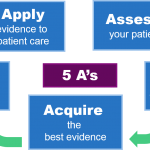This week, we learn about Wellcome’s new requirements for PLS, and we read a critique of the extent to which open science outputs are accessible and interpretable by their intended audiences. We also read about a new strategy for identifying journal–preprint relationships, about the contribution of AI to the reproducibility crisis and about the open publishing expertise of digital archivists. Finally, we highlight a new open science curriculum launched by NASA.
To read:
Wellcome requires PLS for Open Research via Wellcome Open Research | 7-minute read
From December 2023, plain language summaries (PLS) will be required for all submissions to Wellcome Open Research. In this blog post, Wellcome Open Research explores the importance of PLS for making scientific research accessible. Alongside practical guidance for the development of PLS, the publishing platform also provides a number of examples of successful PLS to support authors in preparing future submissions.
Open science: discoverable, accessible, interpretable? via The Scholarly Kitchen | 7-minute read
PLS and open access are undoubtedly important for making scientific literature accessible to and discoverable by those outside the research community. But do these instruments alone ensure that the public can access, interpret and apply the information they find? In this opinion piece for The Scholarly Kitchen, Roger Schonfeld (Vice President, Organizational Strategy at ITHAKA) recounts his own thoughts on the need for curated and supportive infrastructures.
Identifying journal–preprint relationships via Crossref | 9-minute read
To address gaps in their metadata infrastructure, Crossref has developed a new automated strategy for matching journal articles to the preprints from which they have evolved. The publicly available code was applied to all preprints in the Crossref database, resulting in the identification of 331 000 new journal–preprint relationships.
The role of AI in the reproducibility crisis via Nature | 15-minute read
A key potential benefit of artificial intelligence (AI) in supporting scientific research is its ability to identify clinically relevant differences in data that may be overlooked by humans. Indeed, numerous studies exploring the diagnostic capacity of AI have been published in recent years. But do these tools live up to the hype? This news feature explores the extent to which AI systems are erroneously assigning artefacts clinical significance, contributing to a wealth of data that cannot be reproduced.
Learning from digital archivists to transition to open access via Nature | 4-minute read
Digital archivist Jessica Farrell (Community Facilitator at Educopia Institute) has more than a decade of experience in addressing the challenges associated with open and accessible publishing. In this post, Jessica champions the expertise of digital archivists, calling for greater representation of the profession in the open access movement.
To engage with:
NASA launches Open Science 101 course via Center for Open Science
As part of NASA’s Open-Source Science Initiative, Transform to Open Science has developed a new training curriculum designed to provide learners with the skills they need to implement open science practices. Composed of five targeted learning modules, this online course is now open for registration. More information about the programme can be found here.
Enjoy reading our content? Then make sure to follow us on Twitter/X and LinkedIn for regular updates!






